Multiplexers: Types, Functionality, and Applications
Overview: This article explores multiplexers, detailing their definitions, types, design techniques, and applications in digital circuits for data selection and signal processing.
Quantum-dot cellular automata (QCA) is an emerging nanotechnology that offers a promising alternative to traditional complementary metal-oxide-semiconductor (CMOS) circuits, particularly for designing digital logic components at extremely small scales. Multiplexers are one of the fundamental building blocks in QCA-based digital circuits.
What is a multiplexer?
A multiplexer, often called a MUX, is a combinational circuit with multiple input lines and a single output line. It also includes selection lines, determining which input is connected to the output at any given time. They are also known as data selectors because they select one output from several inputs. As shown in Fig. 1, multiplexers are commonly used to convert parallel data lines into a serial data line, enabling efficient data transmission.

Fig. 1 Diagrammatic illustration of the multiplexer. Source: Rakesh Kumar, Ph.D.
For a multiplexer with N selection lines, the number of inputs (m) equals 2 to the power of N. So the relationship between selection lines (N) and input lines (m) is defined by the equation
m=
In any multiplexer circuit, the output is determined by the input signals and the specific combination of selection lines. Multiplexers of different sizes can be designed by varying the number of selection lines (n). The number of selection lines is defined by the equation
N= 
Types
MUXs are classified based on the number of data inputs and selection lines. The most common types are
● 2:1 Multiplexer
● 4:1 Multiplexer
● 8:1 Multiplexer
● 16:1 Multiplexer
2:1 Multiplexer
A 2:1 multiplexer is a digital circuit with two data inputs labeled A and B, one selection line (S0), and one output (Y), as shown in Fig. 2. The selection line determines which input is routed to the output.
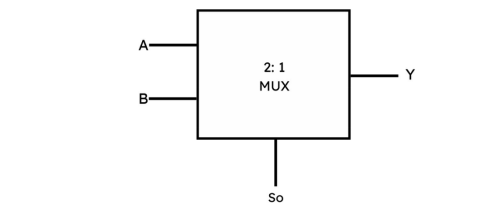
Fig. 2 Diagrammatic illustration of the 2:1 multiplexer. Source: Rakesh Kumar, Ph.D.
Table 1: The truth table for a 2:1 multiplexer is given below
S0 | Y (Output) |
0 | A |
1 | B |
The output Y can be expressed as
Y= A. S0’ + B. S0
4:1 Multiplexer
A 4:1 multiplexer is a digital combinational circuit that has four input signals and forwards them to a single output line based on two selection lines. As shown in Fig. 3, it comprises four data input lines, A, B, C, and D, two select lines, S0 and S1, which route input, and one output line, Y.
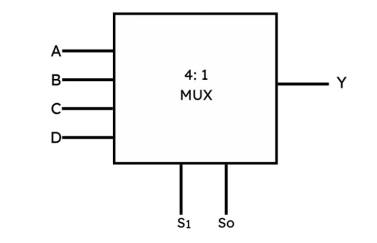
Fig. 3 Diagrammatic illustration of the 4:1 multiplexer. Source: Rakesh Kumar, Ph.D.
Table 2: The truth table for a 4:1 multiplexer is given below
S1 | S0 | Y (Output) |
0 | 0 | A |
0 | 1 | B |
1 | 0 | C |
1 | 1 | D |
The output Y can be expressed as
Y=(S1’⋅S0’⋅A)+(S1’⋅S0⋅B)+(S1⋅S0’⋅C)+(S1⋅S0⋅D)
8:1 Multiplexer
An 8:1 multiplexer is a digital combinational circuit that selects one of eight input signals and forwards it to a single output line, based on three selection lines.
As shown in Fig. 4, it comprises 8 data input lines (A, B, C, D, E, F, G, H), three select lines (S2, S1, S0), and one output line (Y).
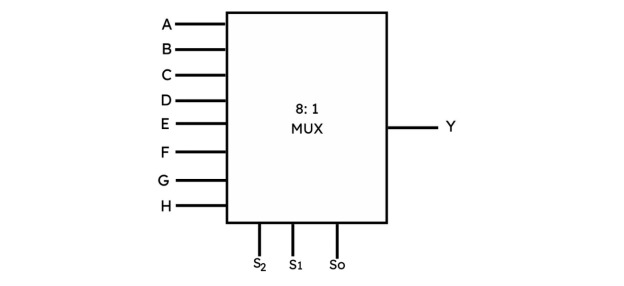
Fig. 4 Diagrammatic illustration of the 8:1 multiplexer. Source: Rakesh Kumar, Ph.D.
Table 3: The truth table for the 8:1 multiplexer is given below
S2 | S1 | S0 | Y (Output) |
0 | 0 | 0 | A |
0 | 0 | 1 | B |
0 | 1 | 0 | C |
0 | 1 | 1 | D |
1 | 0 | 0 | E |
1 | 0 | 1 | F |
1 | 1 | 0 | G |
1 | 1 | 1 | H |
The output Y can be written as
Y=(A.S2’.S1’.S0’)+(B.S2’.S1’.S0)+(C.S2’.S1.S0’)+(D.S2’.S1.S0)+(E.S2.S1’.S0’)+(F.S2.S1’.S0)+(G.S2.S1.S0’)+(H.S2.S1.S0)
Designing a Large Multiplexer Using a Small Multiplexer
Techniques like binary decision diagrams (BDD) are widely used for implementing logic functions using multiplexers, as MUXes can efficiently realize complex Boolean expressions.
As the number of inputs increases, larger multiplexers can be constructed by combining multiple smaller multiplexers in a hierarchical structure. This approach allows for building high-input multiplexers (such as 8:1, 16:1, or higher) using smaller 2:1 or 4:1 multiplexers.
● A 4:1 multiplexer can be constructed using three 2:1 multiplexers, as shown in Fig. 5.
● An 8:1 multiplexer can be constructed from two 4:1 multiplexers and one 2:1 multiplexer.
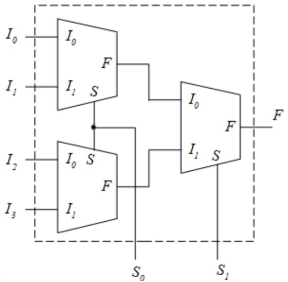
Fig. 5 Diagrammatic illustration of a 4:1 multiplexer that can be constructed using three 2:1 multiplexers. Source: MDPI
Applications
● Data Selection and Routing: It directs data from multiple sources to specific destinations. They function as digital switches, allowing systems to dynamically select which data path to use based on control signals.
● Time division multiplexing (TDM): They are used for TDM which is a common technique where each input signal is assigned a specific time slot, enabling multiple signals to share the same channel at different times.
● Operation sequencing: It allows designers to control the flow and order of data output through logic signals, making systems more flexible and adaptable.
● Parallel-to-Serial Conversion: It converts parallel data into serial format by sequentially selecting each bit from multiple input lines and transmitting them one after another through a single output line.
● Logic Function Implementation: They can implement any combinational logic function without needing specialized components, which simplifies circuit design and reduces hardware requirements.
● Waveform Generation: They can generate various waveforms by selecting different input signals at specific times.
Summarizing the Key Points
● A multiplexer is a digital circuit that selects one input from multiple lines based on selection lines, enabling efficient data transmission.
● Multiplexers come in various types, including 2:1, 4:1, and 8:1, based on the number of data inputs and selection lines.
● Key applications of multiplexers include data selection and routing, time division multiplexing, operation sequencing, and transforming parallel data into serial formats.
Reference
Almatrood, A., George, A. K., & Singh, H. (2021). Low-power multiplexer structures targeting efficient QCA nanotechnology circuit designs. Electronics, 10(16), 1885. https://doi.org/10.3390/electronics10161885
I Divya et al., Design of Low-Power High-Speed Multiplexers Using Reversible Logic Gates. International Journal of Research in Engineering, IT, and Social Sciences. https://www.indusedu.org/pdfs/IJREISS/IJREISS_3932_91769.pdf
Alharbi, M., Edwards, G., & Stocker, R. (2024). An ultra-energy-efficient reversible quantum-dot cellular automata 8:1 multiplexer circuit. Quantum Reports, 6(1), 41–57. https://doi.org/10.3390/quantum6010004
Majeed, A. H. (2021). An ultra-low complexity of 2:1 multiplexer block in QCA technology. Indonesian Journal of Electrical Engineering and Computer Science, 21(3), 1341. https://doi.org/10.11591/ijeecs.v21.i3.pp1341-1346
ALL ABOUT ELECTRONICS. (2022, April 6). Multiplexer Explained | Implementation of Boolean function using Multiplexer [Video]. YouTube. https://www.youtube.com/watch?v=aQlF-9i3fAA
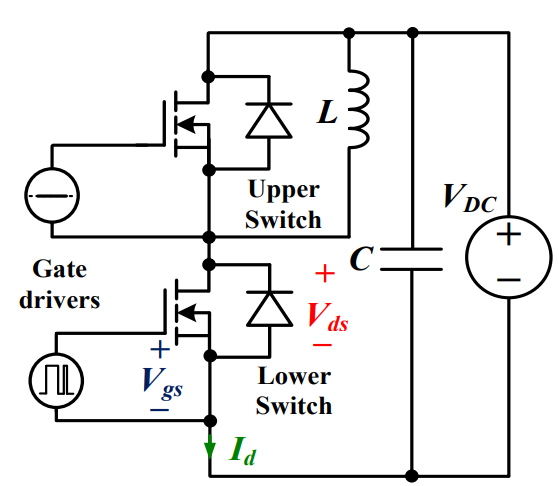 Discovering New and Advanced Methodology for Determining the Dynamic Characterization of Wide Bandgap DevicesSaumitra Jagdale15 March 20242276
Discovering New and Advanced Methodology for Determining the Dynamic Characterization of Wide Bandgap DevicesSaumitra Jagdale15 March 20242276For a long era, silicon has stood out as the primary material for fabricating electronic devices due to its affordability, moderate efficiency, and performance capabilities. Despite its widespread use, silicon faces several limitations that render it unsuitable for applications involving high power and elevated temperatures. As technological advancements continue and the industry demands enhanced efficiency from devices, these limitations become increasingly vivid. In the quest for electronic devices that are more potent, efficient, and compact, wide bandgap materials are emerging as a dominant player. Their superiority over silicon in crucial aspects such as efficiency, higher junction temperatures, power density, thinner drift regions, and faster switching speeds positions them as the preferred materials for the future of power electronics.
Read More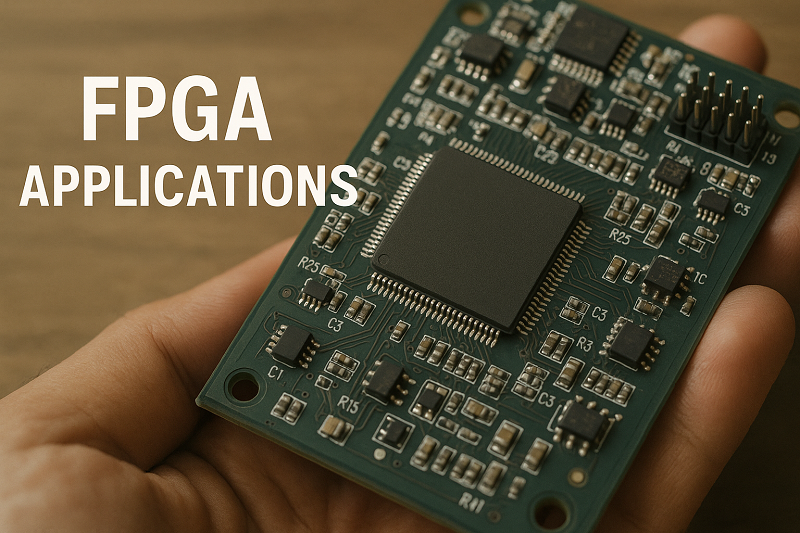 A Comprehensive Guide to FPGA Development BoardsUTMEL11 September 20254127
A Comprehensive Guide to FPGA Development BoardsUTMEL11 September 20254127This comprehensive guide will take you on a journey through the fascinating world of FPGA development boards. We’ll explore what they are, how they differ from microcontrollers, and most importantly, how to choose the perfect board for your needs. Whether you’re a seasoned engineer or a curious hobbyist, prepare to unlock new possibilities in hardware design and accelerate your projects. We’ll cover everything from budget-friendly options to specialized boards for image processing, delve into popular learning paths, and even provide insights into essential software like Vivado. By the end of this article, you’ll have a clear roadmap to navigate the FPGA landscape and make informed decisions for your next groundbreaking endeavor.
Read More Applications of FPGAs in Artificial Intelligence: A Comprehensive GuideUTMEL29 August 20251461
Applications of FPGAs in Artificial Intelligence: A Comprehensive GuideUTMEL29 August 20251461This comprehensive guide explores FPGAs as powerful AI accelerators that offer distinct advantages over traditional GPUs and CPUs. FPGAs provide reconfigurable hardware that can be customized for specific AI workloads, delivering superior energy efficiency, ultra-low latency, and deterministic performance—particularly valuable for edge AI applications. While GPUs excel at parallel processing for training, FPGAs shine in inference tasks through their adaptability and power optimization. The document covers practical implementation challenges, including development complexity and resource constraints, while highlighting solutions like High-Level Synthesis tools and vendor-specific AI development suites from Intel and AMD/Xilinx. Real-world applications span telecommunications, healthcare, autonomous vehicles, and financial services, demonstrating FPGAs' versatility in mission-critical systems requiring real-time processing and minimal power consumption.
Read More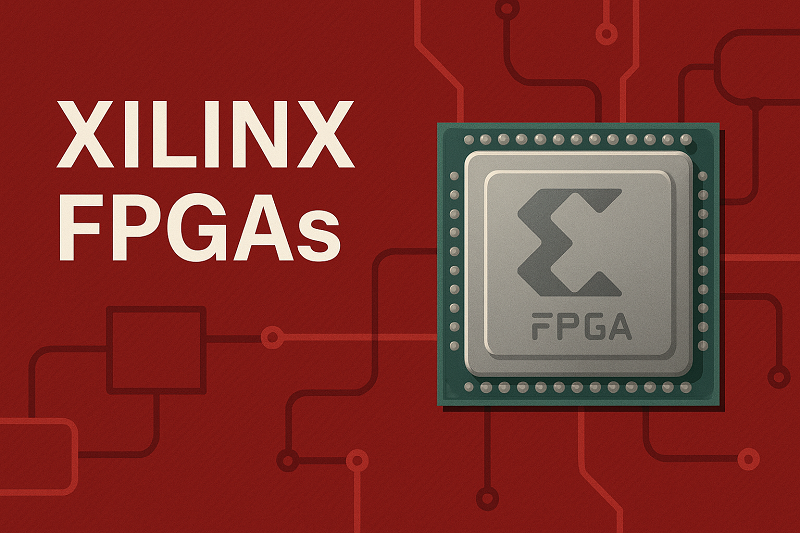 Xilinx FPGAs: From Getting Started to Advanced Application DevelopmentUTMEL09 September 20251833
Xilinx FPGAs: From Getting Started to Advanced Application DevelopmentUTMEL09 September 20251833This guide is your comprehensive roadmap to understanding and mastering the world of Xilinx FPGA technology. From selecting your first board to deploying advanced AI applications, we'll cover everything you need to know to unlock the potential of these remarkable devices. The global FPGA market is on a significant growth trajectory, expected to expand from USD 8.37 billion in 2025 to USD 17.53 billion by 2035. This surge is fueled by the relentless demand for high-performance, adaptable computing in everything from 5G networks and data centers to autonomous vehicles and the Internet of Things (IoT). This guide will walk you through the key concepts, tools, and products in the Xilinx ecosystem, ensuring you're well-equipped to be a part of this technological revolution.
Read More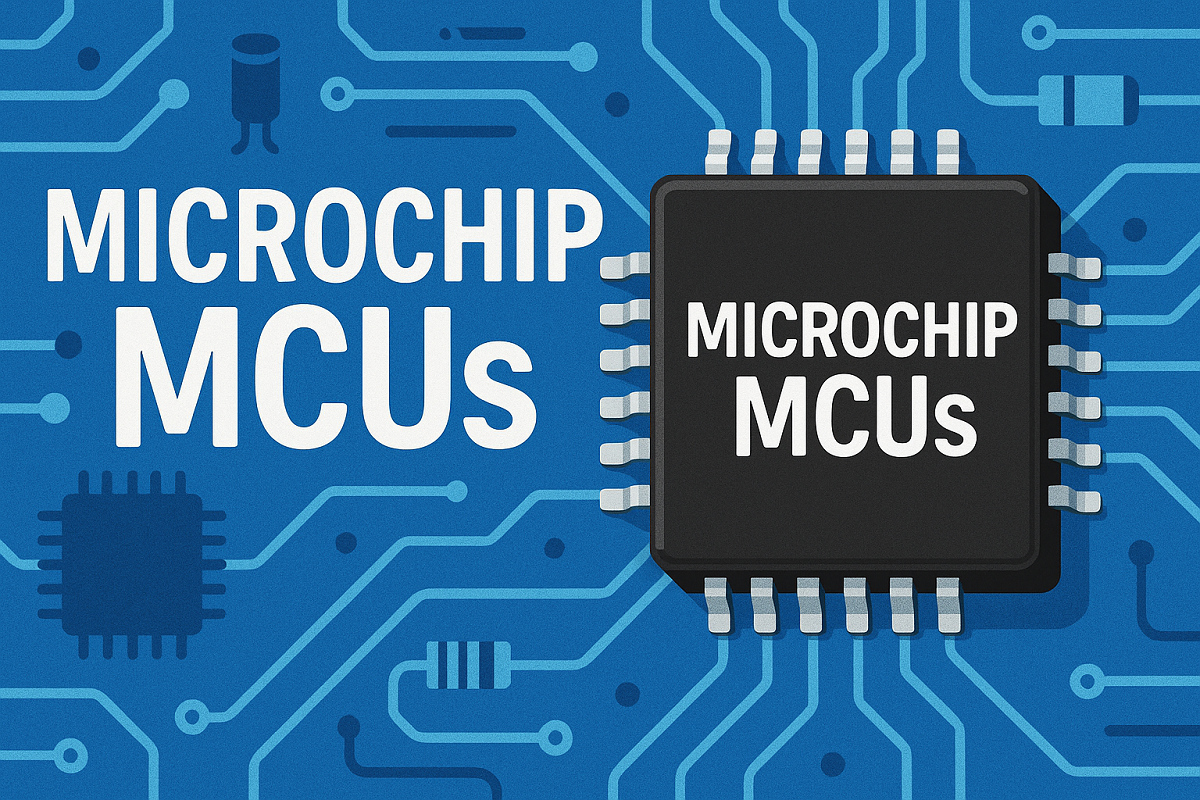 The Ultimate Guide to Microchip MCUs: From Selection to Real-World ApplicationsUTMEL13 September 2025817
The Ultimate Guide to Microchip MCUs: From Selection to Real-World ApplicationsUTMEL13 September 2025817Are you an aspiring electronics enthusiast, a seasoned engineer, or a hobbyist looking to bring your next project to life? If so, you've likely encountered the term Microchip MCU. But what exactly is a Microchip MCU, and how do you choose the right one from their vast portfolio? This comprehensive guide will walk you through everything you need to know about Microchip's powerful microcontrollers, from selection and programming to real-world applications.
Read More
Subscribe to Utmel !
![89HT0832PZCHLG]() 89HT0832PZCHLG
89HT0832PZCHLGRenesas Electronics America Inc.
![FOD4216V]() FOD4216V
FOD4216VON Semiconductor
![TLE82642EXUMA1]() TLE82642EXUMA1
TLE82642EXUMA1Infineon Technologies
![FODM3023-NF098]() FODM3023-NF098
FODM3023-NF098ON Semiconductor
![AD9941BSTZRL]() AD9941BSTZRL
AD9941BSTZRLAnalog Devices Inc.
![AT88SC3216C-MJ]() AT88SC3216C-MJ
AT88SC3216C-MJMicrochip Technology
![SC85410EVTAJD557]() SC85410EVTAJD557
SC85410EVTAJD557NXP Semiconductors
![AD9960BSTZ]() AD9960BSTZ
AD9960BSTZAnalog Devices Inc.
![HCS361/SN]() HCS361/SN
HCS361/SNMicrochip Technology
![AT88SC118-SH-CM-T]() AT88SC118-SH-CM-T
AT88SC118-SH-CM-TMicrochip Technology









